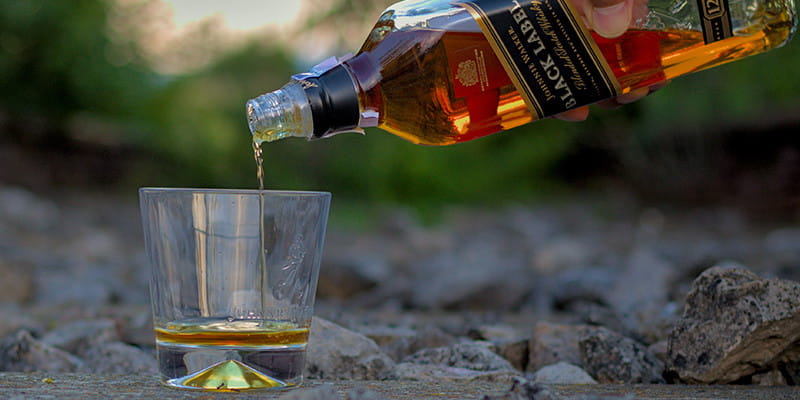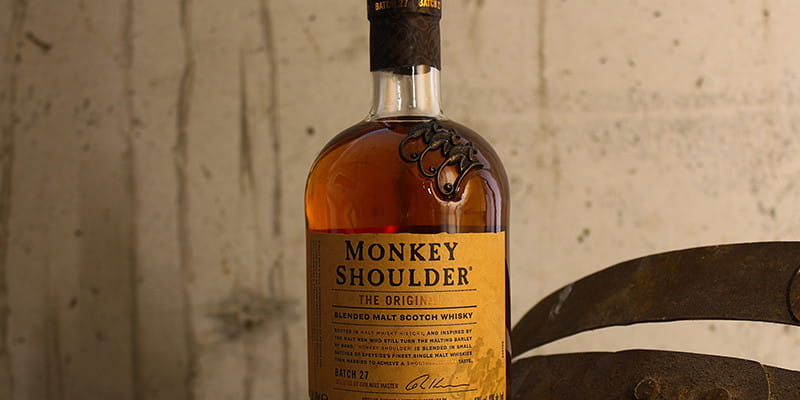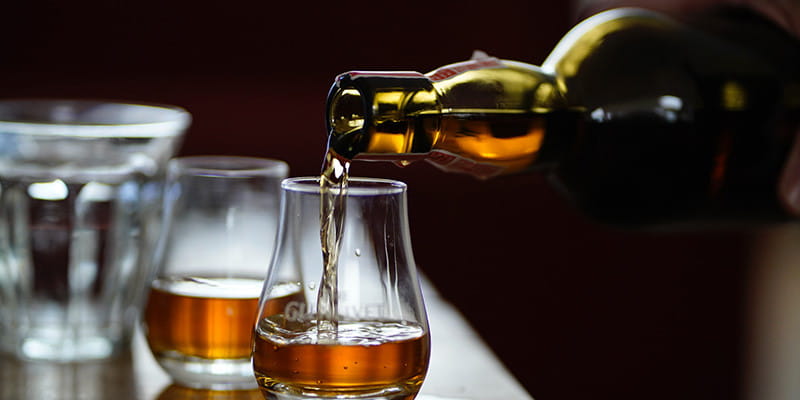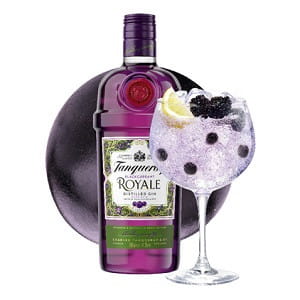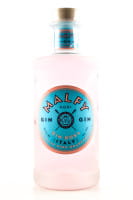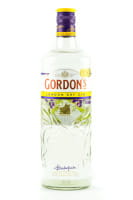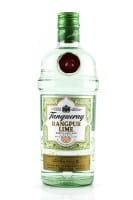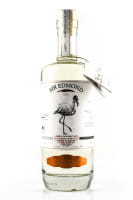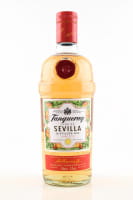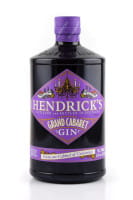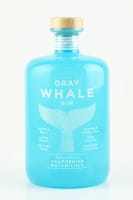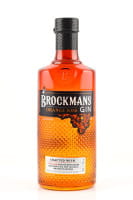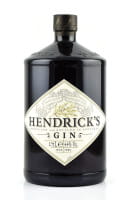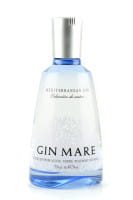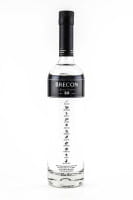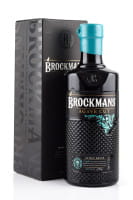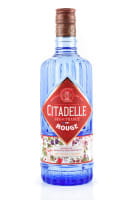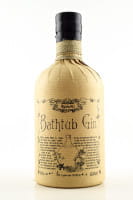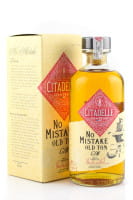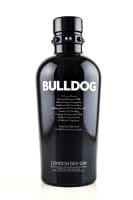
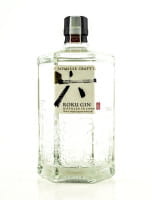
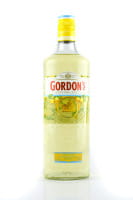
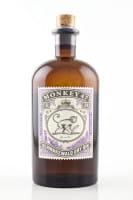
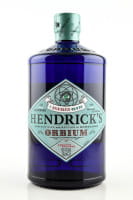
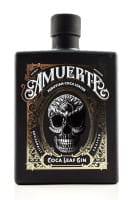
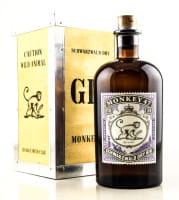
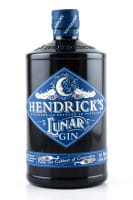






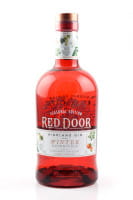







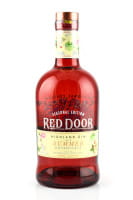
About gin
Gin is probably THE trend spirit of the last few years. The juniper schnapps has lived through a very checkered history. After its initial heyday, gin received little attention for a few decades before it was rediscovered worldwide.
Not all gin is the same: After all, there are a number of different varieties that differ in their production, but above all in their taste. The range is huge: it ranges from dry-spicy London Dry Gins and sweet Old Tom Gins to modern New Western Gins to cask-aged, complex Reserve Gins and fruity-mild Pink Gins.
In addition to gins from traditional distilleries such as Tanqueray, Gordon's Gin or Hayman's, you will also find excellent spirits from gin startups such as Knut Hansen, Sipsmith, Brockmans or Monkey 47.
If you would like to try several gins in peace, you do not have to buy a large bottle of gin straight away. For relaxed tasting evenings at home, we recommend our gin miniatures and samples. And if you want to learn more about the different types of gin and how it came about, or are looking for inspiration for delicious gin cocktails, you'll find what you're looking for here.
What is gin?
Gin is a juniper brandy that was first distilled in the Netherlands in the 17th century. From the Netherlands it soon reached Great Britain, from where it was distributed worldwide.
According to the EU spirits regulation, gin must be made from a neutral base alcohol that has been flavored with juniper berries. In addition to grains such as wheat or barley, the base alcohol is now partly obtained from molasses or fruit. The alcohol content must be at least 37.5%. Other flavorings and extracts may be added to gin as long as the juniper flavor is dominant in the spirit. These flavors are called "botanicals" and are responsible for the characteristic taste of gin. The only requirements for botanicals are that they must be natural or nature-identical. As a result, there are no limits to the creativity of gin producers. The botanicals include spices, herbs, blossoms, berries and citrus zest. Most gins contain around six to ten different flavorings. However, there are also types of gin that contain up to 50 botanicals. Every gin contains juniper and provides its typical, spicy basic character. Lemon and orange peel are also widespread for fruity notes, as well as nutmeg and cardamom for an intensely spicy aroma.
How is gin made?
As a rule, the production of gin takes place in four steps.
In the first step, the botanicals release their aromas to the alcohol. To achieve this, three methods are common:
1) During maceration (also called "cold extraction"), the crushed juniper berries and other botanicals are placed in neutral alcohol for several days or weeks.
2) If the mixture of base alcohol and botanicals for the aroma extract is heated, this is referred to as digestion. By heating up to 70 degrees, the essential oils dissolve more quickly from the botanicals and turn into the alcohol.
3) If a distillery uses percolation, the botanicals are placed in sieve inserts. These hang directly above the still so that the alcohol is flavored during the distillation.
If method 1 or 2 is used, the second step is distillation. In this, the macerate (the mixture of alcohol and botanicals) is heated until the alcohol evaporates. The alcohol vapor rises and becomes liquid again as a result of the subsequent cooling. The result of the distillation is the high-proof gin distillate. Although solid botanicals and alcohol have been separated during the distillation, the distillate still contains their aromas.
The gin distillate usually has an alcohol content of over 90% and is stored in step 3 for a few weeks or months so that the aromatic notes can solidify. Most distilleries store in neutral tanks that do not affect the taste of the gin. The notes of the botanicals are more present in the overall composition. Some distilleries use cask storage instead, which gives the spirit a darker color and additional flavors from the wood.
After storage, the fourth and last step follows: Here the gin is bottled and water is added to the desired drinking strength (at least 37.5% vol., usually 40-47%).
In practice, the methods for flavoring the alcohol are often combined with one another, since maceration, for example, is not suitable for all botanicals.
What types of gin are there?
As with other spirits such as rum and whisky, there are also a few different types of gin, some of which differ significantly in their production and taste. If you already know what types of gin there are, it will be easier for you to buy a gin that you like.
London (Dry) Gin
This traditional gin variant is a true classic and more popular today than ever. A maximum of 0.1 g of sugar or other sweeteners per liter may be added to it. If it comes without any added sweetening ingredients, it can be called "London Dry Gin". The botanicals must all be of natural origin and must be added at the same time. Artificial flavors and colors are not allowed in the production. London Dry Gin is triple distilled and has a distinctive juniper note. It is usually very dry and spicy due to the low sugar content and botanicals used such as coriander, ginger and cardamom.
Dry gin
Even with dry gin, only 0.1 grams of sweetener per liter may be added. Both natural and nature-like botanicals are allowed, which can be added at any time. The legal requirements with regard to botanicals are less strict than for London Dry Gin. Therefore, the manufacturers can let their creativity run free and flavor their dry gins in a variety of ways. In addition to spicy herbs and spices, fruity notes obtained from citrus peel are particularly popular.
Navy Strength Gin
A gin bottled at cask strength or only slightly diluted, which has an alcohol content of more than 50% (around 57% is usual). This gin got its name because it was part of the ration of marines of the British Royal Navy from the 17th century. It is also called "Overproof" or "Gunpowder Proof" Gin. The latter designation is due to the fact that gunpowder on naval ships also ignited if gin was spilled over it. The aroma of Navy Strength Gin is usually very strong and intense, which is why it is mainly used for mixing cocktails.
Old Tom Gin
Old Tom Gin can be seen as the predecessor of gin. After distillation, it is slightly sweetened. In terms of taste, Old Tom Gin is usually much milder than its dry relatives. Both the juniper note and the aromas of the other botanicals are less dominant. It was very popular in the 18th and 19th centuries and, thanks to its diverse, often fruity aromas, is particularly suitable as a basis for cocktails and long drinks. The name of the cocktail classic Tom Collins can be traced back to the use of Old Tom Gin.
New western gin
New Western gin emerged in the mid-20th century when classic gins began to wane due to the popularity of vodka. In contrast to the widespread (London) Dry Gins, New Western Gins are less juniper-heavy. With this type of gin, another botanical, for example a fruit, is usually in the foreground. In some cases, the various ingredients are harmoniously balanced in such a way that no botanical dominates. New Western Gins are well suited for mixing cocktails, for pure enjoyment or in combination with a mild tonic water.
Reserve gin
The production of reserve gin, also called "aged gin", differs from most other gin variants. After maceration and distillation, this special gin can be stored in a wooden barrel like rum or whiskey. As it ages, it acquires a more complex, rounded aroma with subtle notes of wood and often a darker color. Compared to gins with the same alcohol content, barrel-aged gins are also less spicy in character. To savor it to the full, cask-aged gin is best enjoyed neat or on the rocks. But it also cuts an excellent figure in elegant cocktails.
Sloe Gin
To be precise, Sloe Gin is not a gin, but a gin-based liqueur. This is created by macerating finished (London) dry gin with the addition of sugar with sloe berries. Sloe Gin has an alcohol content of around 28-30%. Due to the addition of at least 100 grams of sugar per liter, it is sweet with fruity berry notes and a light bitter and juniper note. The color of sloe gin is light to deep red due to the berries it contains. It is mainly drunk pure, but also serves as a basis for cocktails, such as Sloe Gin Collins or Sloe Gin Negroni.
Genever
Genever is practically the great-grandfather of today's gin. It probably originated in the late 16th century in the Kingdom of the United Netherlands, i.e. today's Netherlands and Belgium. Its name derives from the term "genévrier" or "jeneverbes" (French and Dutch for "juniper"). The traditional schnapps is made from barley or rye malt that is flavored with juniper. Depending on the distillery, caraway, coriander or aniseed are also added. According to the law, it contains at least 35% alcohol by volume. The taste shows a dominant juniper aroma, which is accompanied by notes of grain and is reminiscent of grain. Genever is traditionally drunk pure from tulip-shaped glasses and, in contrast to modern gins, is only suitable for mixed drinks to a limited extent.
Pink gin
This unofficial gin category includes all gins that draw attention to themselves with their atypical color. The pink is due to the use of fruits as botanicals or dyes. The taste focus of Pink Gin is clearly on fruity notes: Typical botanicals include raspberries, blueberries, rhubarb, grapefruit and other berries and citrus fruits. The juniper taste, on the other hand, takes a back seat to the mostly sweet pink gins.
Non-Alcoholic Gin
There are many different reasons people abstain from alcohol. Thanks to new developments on the market, however, this does not mean that they have to do without the taste pleasure: Many manufacturers, including both small distilleries and well-known brands such as Tanqueray and Gordon's, now offer non-alcoholic gin alternatives. Of course, these do not taste exactly like "real" gins, since alcohol is a flavor carrier. Thanks to the skilful maceration of a wide variety of botanicals, these offer an exciting basis for delicious non-alcoholic cocktails and long drinks.
How does gin taste?
This question is difficult to answer in general because the taste of gin differs from distillery to distillery. What at least classic (London) dry gins have in common is the clear juniper note. Juniper berries contain numerous essential oils and have a sweet-fruity, resinous-spicy taste with slight bitter notes.
Which other aromas accompany the juniper taste depends individually on the botanicals used. Many different spices, fruits, herbs, roots, bark, blossoms and seeds are used. The aim of the distillery is usually to develop the taste of their gin in one of four directions: sweet, fruity, spicy or floral. However, combinations of different basic directions are also common. The botanicals used are often mentioned (at least in part) on the label. The following list can give you an indication of which notes you can expect from the respective gin:
Sweet: Licorice, vanilla, cinnamon, various berries and fruits
Fruity: Dragon Eye, Grapefruit, Raspberry, Lime, Orange, Lemon
Spicy: Green tea, ginger, cardamom, coriander, cumin, cloves, pepper
Floral: bergamot, hibiscus, lavender, lotus flower, rose
Compared to other spirits, gin is lighter and fresher than rum and whisky. Due to the use of botanicals, it is usually more complex and full-bodied than vodka. A good gin is therefore suitable both for pure enjoyment and as a basis for cocktails and long drinks.
The history of gin
Today's trend spirit gin can look back on a centuries-long history. As early as the Middle Ages, juniper was valued in alcoholic tinctures for its antibacterial and digestive properties.
Due to technological advances in the field of distillation, more and more high-proof alcohol was produced for consumption from the 16th century. As a result, typical spirits emerged in various European countries: vodka in Russia, cognac in France, grappa in Italy, whisky (or whiskey) in Scotland and Ireland and genever in Belgium and the Netherlands.
Genever got to England from the Netherlands in two ways in the 17th century: Soldiers stationed in the Netherlands liked the juniper schnapps and took it home with them. In addition, the Dutch King William III, who valued Genever very much, also became King of England in 1689 and took it with him. By royal decree, producers of juniper schnapps in England did not have to pay taxes to the state. On the other hand, high import duties were imposed on French brandies, which were popular in England. This led to a veritable boom in the production of genever, which was called "gin" for short in England.
The production of brandy in England was not subject to any regulation at this time. This led to a significant drop in the quality of cheaply produced spirits. The Old Tom Gin was also created during this time: with the added sugar, the distilleries tried to drown out off-flavors and unpleasant aromas in their distillates. Due to the widespread abuse of poor-quality spirits, the British government intervened in the mid-18th century: taxes on spirits were increased and stricter requirements imposed on production.
In retrospect, the British Royal Navy played an important role in the modern-day meaning of gin and gin-based cocktails: Far from their homeland, English gin was part of the standard ration of the navy. The ships also carried tonic water against malaria and cordial lime juice to prevent scurvy. To make the tonic water, which was extremely bitter at the time, more enjoyable, the soldiers of the Royal Navy mixed it with gin. This is how the gin and tonic was born. The Gimlet cocktail, which is still popular today, was made on the naval ships from Lime Juice Cordial and gin.
To combat the poor quality of gin in England, representatives of distilleries met in the Rectifiers' Club in the early 19th century. The exchange led to an improvement in production methods and thus to higher quality gins and other spirits. The now more highly regarded gin then began a new course of success: it was drunk in the form of Tom Collins or Gin Tonic in elegant "gin palaces" and cocktail bars.
After Prohibition and the Second World War, the global demand for gin dropped sharply for a few decades and more vodka was drunk instead.
Around the turn of the millennium, sales rose again, sometimes so much that there was talk of a "gin hype". Small, experimental distilleries are partly responsible for this: They produce gins with very different characters, so that the right gin is available for every taste. The renaissance of classic cocktail culture is also likely to have played its part in the renewed success of gin: after all, the juniper schnapps is ideal for mixing cocktails and cuts a very good figure in a wide variety of mixed drinks.
Popular gin cocktails and gin based drinks
Since gin is a very diverse spirit, countless different cocktails can be prepared with it. It doesn't matter whether you like it fruity, dry, sweet or spicy: there is one or the other gin-based cocktail that you will enjoy.
1.Dry martini
A dry, spicy cocktail classic that has been drunk since at least the 1880s. Today's Dry Martini is significantly tart than the original version with Old Tom Gin. A good gin has a very positive effect here. It is best to use a classic London Dry Gin, such as from Tanqueray or Gordon's. If you like it less dry, you can use an Old Tom Gin.
Pour 5cl classic London Dry Gin and 1cl dry vermouth into a glass with some ice cubes and stir. Strain the mixture into a chilled martini glass without the ice. Garnish the dry martini with a lemon zest or an olive.
2.TomCollins
This refreshing cocktail is the perfect drink for hot summer days. The first written recipe comes from a book by the legendary bartender Jerry Thomas from 1876. The ELG No.2 Gin and the Hayman's Old Tom Gin, for example, are well suited for the Tom Collins.
For the Tom Collins, pour 5 cl Old Tom Gin, 3 cl freshly squeezed lemon juice and 2 cl sugar syrup into a long drink glass. Now put some large ice cubes in the glass and fill it up with soda. Garnish the drink with a lemon wedge.
3. Gillet
Another old classic, this sweet and sour cocktail is quick and easy to make. Gins with a pronounced citrus note are well suited for the Gimlet. We recommend the Tanqueray Rangpur Lime, the Beefeater London Dry Gin and the fruity gins from the Italian manufacturer Malfy.
Pour 4 cl Dry Gin and 2 cl Lime Juice Cordial into a small cocktail glass and stir. Add ice cubes if you like and garnish the gimlet with a lime wedge.
4. Negroni
The Negroni is a sweet and bitter cocktail invented around 1920. Especially in its native Italy, the Negroni is one of the most popular cocktails. To make it fresher and less bitter, you can add a dash of soda water. The Islay Dry Gin from The Botanist, the Bombay Sapphire London Dry Gin and the Monkey 47 Black Forest Dry Gin cut a fine figure in the Negroni.
For the Negroni, put a few ice cubes in a tumbler glass. Then add 3 cl each of dry gin, red vermouth and Campari to the glass and stir. Garnish the drink with an orange zest and your Negroni is ready.
5. Gin Basil Smash
This refreshing, spicy cocktail is significantly younger than the drinks presented before. It is enjoying growing popularity among gin fans and is now offered as standard in many bars. The Gin Basil Smash is a very summery cocktail, but it also tastes good in any other season. To add an extra floral or fruity note, you can use Roku's Japanese Craft Gin or Brockmans' Intensely Smooth Premium Gin.
First, put a good handful (about 10 to 15 leaves) of fresh basil and 2 cl of simple syrup in a shaker. Crush the basil with a pestle to release the essential oils. Now pour 2 cl lemon juice, 6 cl gin and some ice cubes into the shaker. Shake the mixture well and strain the drink through a fine sieve into a tumbler. Add ice cubes, garnish with basil and a wedge of lemon, and serve with a straw.
6. Gin Gin Mules
This trendy cocktail is at least as refreshing as a Gin Basil Smash or Tom Collins. It also scores with its pleasantly hot ginger and spicy mint notes. To give the cocktail more complexity, it is best to use a classic gin with a pronounced juniper note. We recommend the London Dry Gins from Tanqueray, Bulldog and Gordon's.
First fill 5-10 fresh mint leaves, 2.5 cl lime juice and 3 cl simple syrup in a shaker. Crush the mint well with a pestle so that it blends into the liquid ingredients. Then pour 4.5 cl gin and ice cubes into the shaker. Shake the drink, then strain through a fine bar strainer into a highball glass with ice cubes. Finally, fill up the glass with approx. 3 cl ginger beer.
7. Bramble
This late summer cocktail is the ideal drink for all berry lovers. It works best with fresh blackberries, which are in season from August to October. Unfortunately, frozen blackberries water down the Bramble a bit. The London Dry Gins by Sipsmith and Bulldog are a great match for this cocktail.
First, place blackberries in a tumbler, to taste, and lightly mash them with a pestle. Now fill the glass with crushed ice. Then add 5 cl gin, 2 cl lemon juice and 1 cl sugar syrup to the glass and stir. Decorate the bramble with a blackberry and the drink is ready.
8. Gin and tonic
No list of gin-based cocktails would be complete without this ultimate classic! Use your favorite gin and decorate the gin and tonic with the garnish recommended by the manufacturer. For example, the distillery Hendrick's from Scotland recommends the combination with a cucumber slice. In some cases, tonic waters with a specific flavor (e.g. floral or fruity) are also recommended.
Fill a highball or bulbous Coppa glass completely with large ice cubes. Then add 4-6 cl of your preferred gin to the glass, depending on the desired strength. Now fill the glass with chilled tonic water of your choice (about 250 ml). Garnish with a lemon wedge or distillery-recommended garnish.
Our gin recommendations
1. Malfy
Malfy Gin is distilled by Torino Distillati in the Italian municipality of Moncalieri, not far from Torino. Malfy's focus is on fruity, summery gins. Depending on the variety, sun-ripened lemons, oranges, grapefruits or limes from Italy are used as central botanicals.
2. Tanqueray
The world famous distillery Tanqueray was founded in 1830 by Charles Tanqueray in London and moved to Scotland after the Second World War. For around 200 years, the traditional company has been producing classic London Dry Gins and bottling them in characteristic green bottles. The range is supplemented by modern creations such as the Tanqueray Rangpur and the Tanqueray Blackcurrant Royale.
3. Monkey 47
The Monkey 47 brand from the Black Forest has probably contributed significantly to the gin hype in Germany. It is based on molasses, is obtained from a total of 47 botanicals and has an incredibly complex character. A really good gin, especially if you like spicy and woody notes.
4. Brockman's
Brockmans is produced in the G&J Distillers, which opened in 1761. Old craftsmanship meets modern taste here: the botanicals include blueberries, blackberries, angelica root and orange peel. Brockmans is an elegant, spicy and very fruity gin.
5.Bulldog
Despite only being on the market since 2007, Bulldog Gin has managed to gain some respect. In addition to various spices, this London Dry Gin also includes exotic botanicals such as lotus leaves and dragon eye. It is wonderfully harmoniously balanced, tastes spicy and very floral.
6. Hendrick's
This Scottish gin comes in a distinctive bottle reminiscent of old apothecary bottles. A modern classic is the gin flavored with numerous spices as well as rose petals and cucumbers - sounds exciting and tastes the same. In addition, Hendrick's regularly presents limited special editions that are popular with gin fans and collectors alike.
7. Hayman's
Hayman Distillers was founded in 1820. The distillery produces gins of different categories according to old family recipes, including London Dry Gins, Sloe Gins and Old Tom Gins. The range also includes elegant reserve gins and special editions, such as those with intense citrus aromas.
Wie schmeckt Aberlour Whisky?
Elegant, rund, ausgewogen – diese Begriffe fallen, wenn es um die Beschreibung des Aberlour Hausstils geht. Aberlour ist ein nicht rauchiger und sehr süß-fruchtiger Single Malt. Aromen von roten Äpfeln, Honig und weiche Nussnoten findest Du in Aberlour Whiskys. Je nach Abfüllung und Fasszusammensetzung werden mal die Karamell- und Vanilletöne oder die beerigen Sherrynoten mehr betont. Mit diesem schmeichelnden Malt triffst Du meist den richtigen Ton.
Wie wird Aberlour Single Malt hergestellt?
Der Großteil der heutigen schönen Steingebäude, in denen der Aberlour Whisky hergestellt wird, wurde 1892 erbaut. Die Brennerei liegt nur einen Steinwurf vom Fluss Spey entfernt, der der legendären Whiskyregion Speyside ihren Namen verdankt. Der Name Aberlour entstammt jedoch dem kleinen Beifluss dem Lour. Wörtlich übersetzt heißt Aberlour "Mündung des Lour", an der die Brennerei liegt. Der Quelle für das klare Wasser von Aberlour, der St. Drosdan`s Well, werden heilende Zauberkräfte nachgesagt. Wenn Du einmal die nahe gelegenen Linn Falls besucht hast, wirst auch Du es glauben. Denn dieser märchenhaft schöne kleine Wasserfall diente einst Kelten und Druiden als Kultstätte. Der Lour fließt an den Standing Stones des Fairy Hill (Feenhügel) vorbei. Wer möchte dieses magische Wasser nicht in seinem Whisky haben?
Für die Kühlsysteme der Brennblasen wird das Wasser des Lour Flusses verwendet. Dies wandert jedoch unberührt zurück in den Fluss, denn in den Whisky selbst kommt nur reines Quellwasser. Die Fermentation findet in sechs großen Washbacks aus Edelstahl statt. Heute destilliert Aberlour auf vier zwiebelförmigen Pot Stills das Destillat für den Single Malt Whisky. Die Kupferbrennblasen haben keine Ausbuchtungen. Aberlour Single Malt reift sowohl in Ex-Bourbonfässern als auch in Ex-Sherryfässern. Der malzig-fruchtige Brand verträgt sich sowohl mit amerikanischer als auch europäischer Eiche prächtig. In Frankreich zählt Aberlour zu den meistverkauften Malt Whiskys. Auch in einigen Blends wird Aberlour Single Malt verarbeitet wie im Scotch Clan Campbell.
Zur Geschichte von Aberlour - dreimal Geburtstag!
Aberlour kann im Grunde dreimal Geburtstag feiern. Zum ersten Mal errichtet wurde die Destillerie im Jahr 1826. Diese fiel jedoch 1878 einem Großfeuer zum Opfer. 1879 baute James Fleming, ebenfalls Inhaber der nahegelegenen Dailuaine Distillery, Aberlour wieder auf. Der heutige Standort wurde sowohl unter anderem wegen der St Drosdan's Quelle gewählt, der man Heilkräfte nachsagte. 1898 kam dann der erneute Tiefschlag. Ein weiteres Feuer zerstörte die Brennereigebäude und den Lagerbestand. Ein herber Rückschlag für jede Whisky Destillerie. Es folgten einige Besitzerwechsel bis Aberlour im Jahre 1975 vom französischen Getränke Konzern Pernod Ricard übernommen wurde. Seit dem ist Aberlour offensichtlich in Guten Händen mit der schottischen Tochterfirma Chivas Brother. 2002 wurde ein kleines Besucherzentrum eröffnet. Drücken wir die Daumen, dass kein vierter Geburtstag nötig sein wird.
Empfehlungen im Aberlour Sortiment
Das Schöne an Aberlour ist, dass das Sortiment für jeden Genießer passende Abfüllungen bietet. Gerade die Abfüllungen mit niedrigen Volumenprozenten eignen sich hervorragend, um Neulinge an das Thema Single Malt Whisky heranzuführen. Ein Beispiel ist der milde, süffige Aberlour 10 Jahre Forest Reserve und der Aberlour 12 Jahre Double Cask. Für ein samtig weiches und tiefgründigeres Geschmacks-Erlebnis greife zu den älteren Varianten wie dem Aberlour 16 Jahre Double Cask Matured oder dem Aberlour 18 Jahre.
Für die erfahrenen Whiskyliebhaber hat Aberlour extra eine Version des 12-jährigen Single Malts kreiert ohne Kühlfilterung und mit erhöhter Trinkstärke. Der Aberlour 12 Jahre Non Chill-Filtered kommt mit 48% Vol. ins Glas. Mehr Rückenwind für die Aromen ist somit gewiss. Ebenfalls mit erhöhter Trinkstärke von 48% Vol. kommt der Aberlour Cash Annamh ins Glas. Noch eine Schippe obendrauf legen die beliebten Aberlour A'bunadh Abfüllungen. Diese kommen in intensiver Fassstärke daher und sind ebenfalls non chill filtered. Diese Cask Strength Bottlings werden im Batch abgefüllt, variieren somit minimal im Charakter, sind jedoch stets einen Kauf wert. Der Aberlour A'bunadh wurde ursprünglich als Vollreifung in Fässern kreiert, die zuvor Sherry enthielten. So kannst Du die volle Wucht der Sherryfassreifung genießen. Mittlerweile gibt es mit dem Aberlour A'bunadh Alba auch eine Variante aus Ex-Bourbonfässern. Hier kannst Du die hellfruchtige Seite dieses exzellenten Scotch Whiskys ergründen.
Zahlen & Fakten zu Aberlour
Adresse: Charlestown-of-Aberlour, Banffshire, AB3 9PJ, Schottland
Gegründet: ursprünglich 1826 von James Gordon und Peter Weir an jetziger Stelle 1879 von James Fleming
Region: Speyside
Besitzer: Pernod Ricard, Chivas Brothers Ltd
Typ: Single Malt Scotch Whisky
Rauch: Unpeated/ Ungetorft/ Nicht rauchig
Status: aktiv
Kapazität: ca. 3.800.00 lpa (Liter pro Jahr)
Brennblasen: 2 Wash Stills (21.120 l), 2 Spirit Stills (ges. 35.456 l)
Washbacks: 6, Edelstahl
Mashtun: Semi Lauter, 12 Tonnen
Wasser: Quellen am Ben Rinnes, St Drosdan's Quelle
Visitor Centre: Ja
Telefon: +44 (0)1340 / 881249
Website: www.aberlour.com
Wegbeschreibung zur Aberlour Destillerie

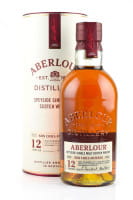

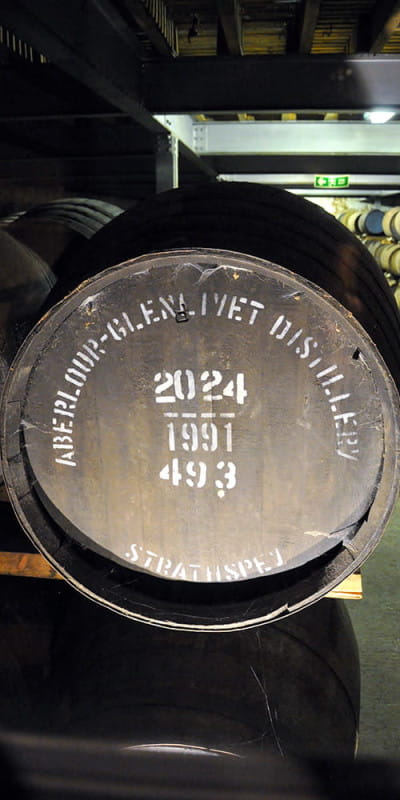
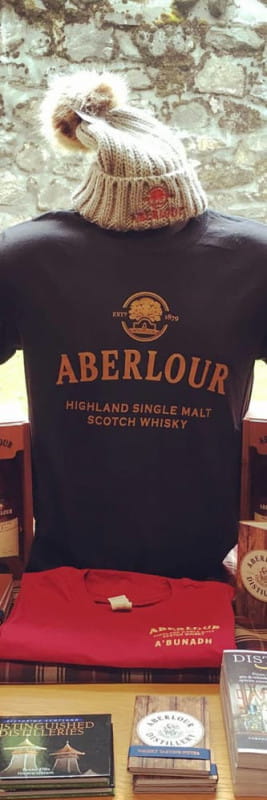
Bildnachweis / Bildquelle: Glenlivet Distillery










